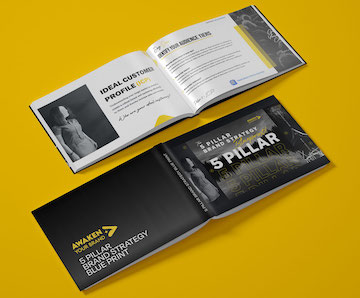The world is full of luxury businesses looking cheap and shoddy. Their design image, their message, their story and as a result even their service or product is far from luxury. In the past, I had defined luxury many times and emphasised that being a luxury brand is not just about having a luxury service or product but actually more about a brand strategy that presented the luxury image to the public.
If you are positioning your brand or business to be a luxury player then you must conduct a brand audit to determine if your brand looks and feels like a luxury brand and how it stacks up against your brand goals and the perceptions of the marketplace. Without this insight, your brand may be risking failure.
How do you determine if your luxury brand is looking cheap?
Look at your whom you are targeting
If you are attracting non-ideal potential customers, then your luxury concept may be at risk. Most startups that enter the luxury market tend to try and communicate with everyone in the market. They do not segregate the target audience and customize their messaging to match a narrow segment. Trying to be all to everyone is sure to fire way to brand disaster.
A great example is Timberland which was very successful in the 80s and 90s and then took a nosedive because it did not have a narrow and focussed messaging strategy. But the past three years, after they were bought over by VF, things are turning around and Timberland seems poised to make a great come back!
Building your buyer personas and then analyzing their world view is critical to your luxury business. Another pitfall a lot of luxury brands step into is focusing on revenue where ever it comes from rather than using exclusivity and pricing strategies to get the right kind of revenue. You know what they: not all revenues are created equal.
Look at your pricing strategy
So, this brings us to the next important insight that relates to how you price your luxury product or service. Are you pricing for volume or quality of clients? Remember that once you attract customers who are price conscious and do not really have the idea of brand loyalty, it would be very difficult to come out of that and attract customers who look for luxury offerings.
Pricing your products or services sufficiently higher than your competition and the market trend should be your goal. This will have an added advantage of higher margins. Of course, it is difficult to sell products or services that are higher than the competition or what the market comes to expect. But this is where you differentiate your brand as a luxury brand.
A great example is Louis Vuitton who made the mistake of offering lower-priced bags and accessories just to introduce a new audience to its line of products. This led to a rapid increase in market share and sales but eroded the exclusive nature of the brand which put off the high paying customers. LV has been working for quite some time to repair this situation.
Cheap prices indicate a cheap brand. I am not advocating that you should blindly increase your rates beyond what your market can accommodate. I am suggesting a strategic plan in your pricing.
Look at your marketing strategy
Your marketing strategy should not just be about reaching people and bringing eyeballs to the brand, although for some types of businesses that may be the right strategy. For a luxury business, it is not about reaching people but it is about reaching the right people. Time and again you see luxury brands take a scattershot approach to marketing.
The usual tools that are used with abandon are the website, blogs, video channels, and social media channels. Brands simply post content, messages, and images on all these channels without a strategic marketing plan that aligns with the brand goals and business vision. This is where the fundamentals come in handy and determine what messages should be broadcasted. Fundamentals such as brand vision, core values, differentiation, mission statement and so on.
Look at your visual identity
Time and again, startups and brands in the luxury sector do not invest enough to get a top class logo design or brand identity designed. This leads to a poor impression right from the start and then extends to every touch point of the brand. Examples are plenty in the luxury fashion sector with brands sporting poor to outright hideous logos and identities.
Here are a few items that your luxury logo must get right:
- The logo must reflect the expertise of the company
- Logos must be designed to communicate the reliability and trustworthiness of the company
- Choosing a simple design for the logo
- Choosing a logo that is visible enough
- Selecting simple, catchy slogans if needed
- Creating a logo design that is timeless
- Selecting the proper colors for a logo design
Here is an article that goes into each of these essentials in depth

